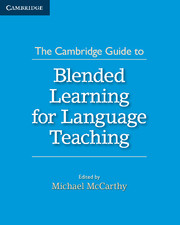Chapter 11 - A Case Study in Language Teacher Education
Published online by Cambridge University Press: 22 September 2021
Summary
INTRODUCTION
This chapter looks at the potential of blended learning (BL) in the context of higher education teaching, in particular in relation to language teacher education. BL offers new opportunities for learning and it can enhance learning by complementing the traditional classroom method with computer-mediated activities and electronic resources. It also enhances flexibility of learning as students can access material from different locations, and at any time that is convenient. In this chapter, we will examine a case study of the use of BL tools and activities in two undergraduate English Language Teaching modules. We will show how some of the challenges of real-time face-to-face learning environments can be overcome (for example, the short-lived, or what is often referred to as ‘ephemeral’ nature of live lectures and the stress of capturing what is being said in a lecture). The case study will also evaluate the use of a Learning Management System (LMS) in tandem with the traditional classroom, including the use of lecture-capturing software, uploaded to an LMS (in this case, Moodle), and the use of related activities, such as quizzes and discussion forums. We will show that these strategies have enhanced opportunities for learning and increased student engagement with content. We will draw on LMS participation statistics, student evaluations of teaching (SETs) and questionnaire data for our analysis.
Young (2002 : A33) quotes the president of Penn State University (at that time) as saying that the convergence of classroom and online learning is ‘the single greatest unrecognized trend in higher education today’. With hindsight, this was undoubtedly prophetic. Many factors have driven the move in mainstream higher education from solely presenting courses in traditional face-to-face contexts to offering a range of formats for learning, from face-to-face lectures or small groups to online and even Massive Open Online Courses (MOOCs). This paper focuses on BL as a format of enhanced teaching and learning. BL entails both face-to-face teaching and learning and the use of a LMS, within which teaching and learning also takes place. We do not see BL and traditional learning as being in a mutually exclusive binary relationship. In fact, we contend that one enhances and complements the other (see also King, Chapter 6, this volume).
Information
- Type
- Chapter
- Information
- The Cambridge Guide to Blended Learning for Language Teaching , pp. 176 - 199Publisher: Cambridge University PressPrint publication year: 2015
